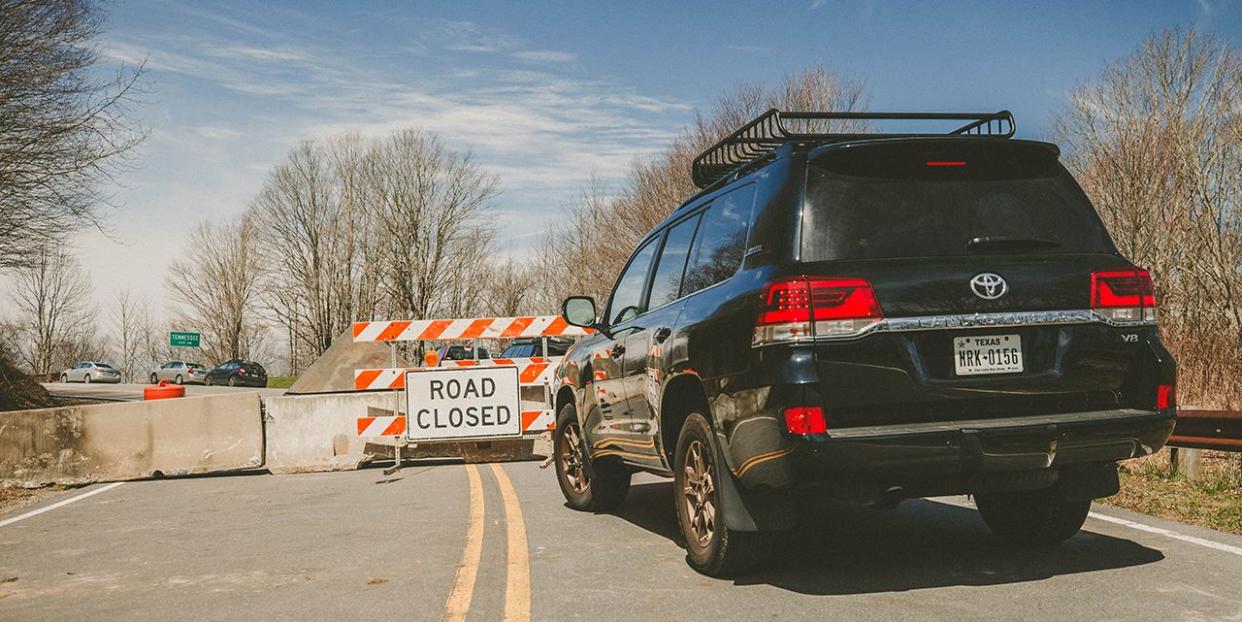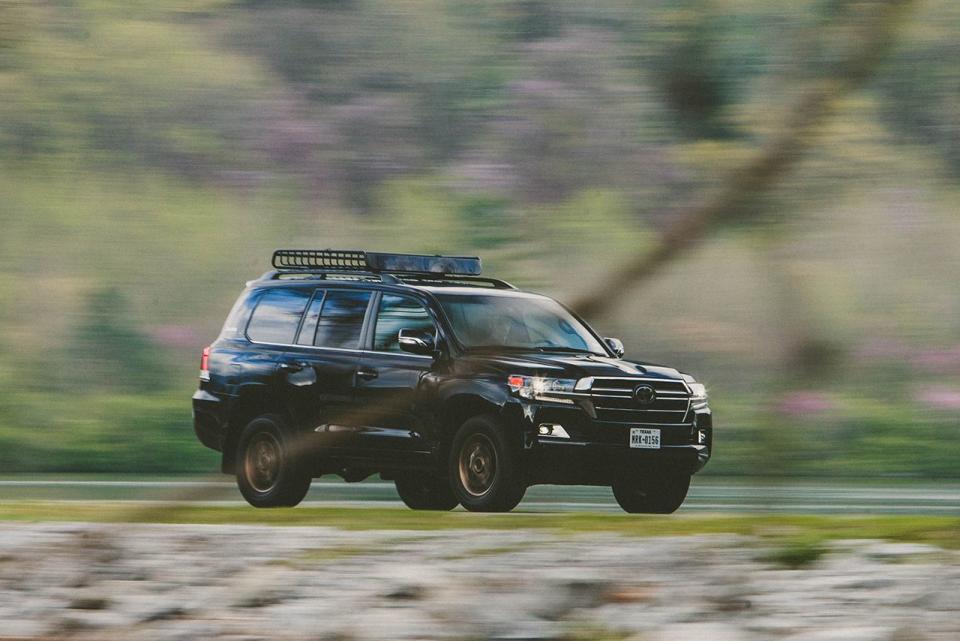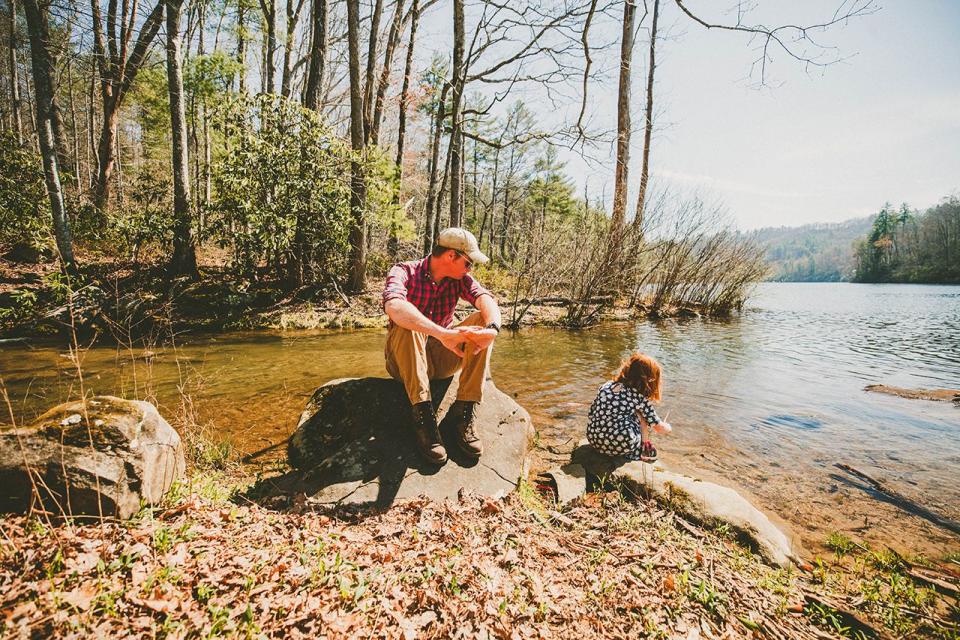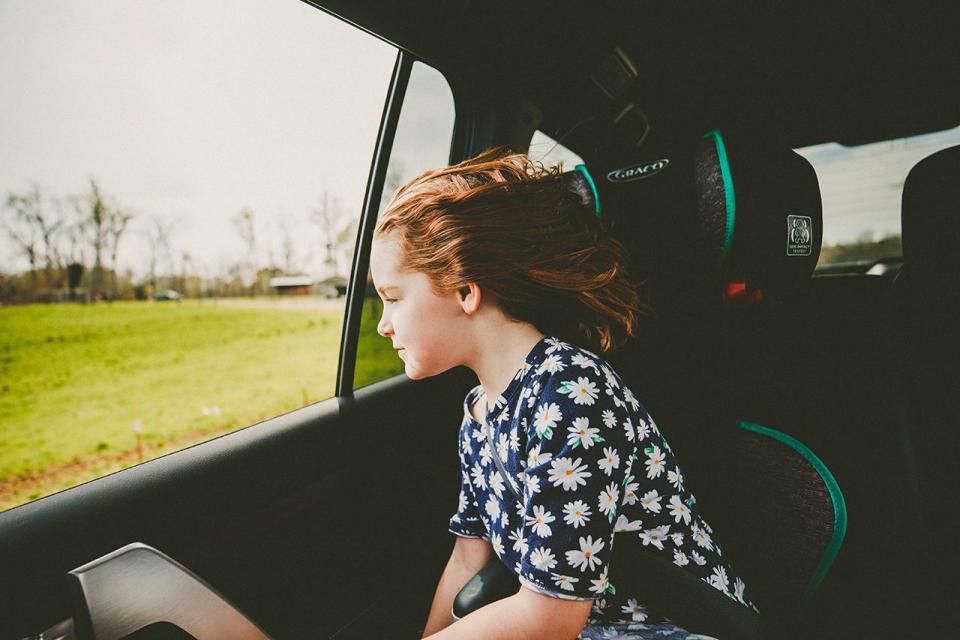We Got Stuck in the North Carolina County Closed for COVID-19

We left the house Saturday morning. I packed up the 2020 Toyota Land Cruiser and headed towards North Carolina with my wife in the passenger seat and our daughter in the back. A kind of take-your-kid-to-work day. Like everyone else, we’ve had to make some adjustments, lately. Kiddo’s school is closed through the end of April, and the rules of social distancing dictate that we can’t turn to our usual host of sitters when we need to photograph a press car for a magazine feature. For us, our vehicles have always felt like an extension of our living room. A safe place to go and wander and see. With a full tank and a packed cooler, we could cover a couple hundred miles without stopping for fuel or food, knock out a photo shoot, and dull the shrieking cabin fever ringing in our ears.
The National Forests that make up the borderlands between Tennessee and North Carolina are a playground. Thousands of acres of uninterrupted Appalachia, miles and miles of winding two-lane and empty forest roads that press up against white water falls and wide lakes. The Land Cruiser was built for places like that. A true wilderness. One of the last such places in the East. But because it’s so remote, there are only so many ways in. The most direct route is U.S. 129, the infamous Tail of the Dragon.
An illuminated highway sign warned that the road was closed at Tapoco Power Station, 3/27. It happens sometimes, either due to a crash or roadwork, but it was Saturday, the 28th, and the road was full of drivers and riders enjoying 129’s tangle of apexes. Kiddo pointed and cheered as a parade of Hondas and Ducatis came screaming past in the opposite lane, knees down and throttles gapped wide. But when we crossed the bridge below the Cheoah Dam, we found concrete barriers blocking the road from ditch to ditch. There were no workers. No checkpoint. No detour instructions.

We backtracked, this time following the banks of Cheoah Lake towards Fontana without cell service, following the Land Cruiser’s ancient navigation map as it pointed us vaguely towards 129. Still, it was good to be out of the house. Good to be away from the roaring news cycle. To feel normal, the windows down and the sun warm, the sounds of I Spy and sing-alongs competing with the songbirds in the trees above us. We popped out less than a mile from the closure, again without any hint of construction. The reroute cost us an hour, so when we turned off into the Joyce Kilmer Memorial Forest, we stopped for lunch, dropping the Land Cruiser’s tailgate at a pull off near the cool, clear water of Sateelah Lake. A meal of crackers and cheese. Oranges and trail mix. Judicious application of hand sanitizer. We let the girl run around, chase her butterflies, and jump from stone to stone. When we buckled her back into her car seat, none of us knew we’d trapped ourselves in the only county in North Carolina to close its borders to non-locals.

Governor Roy Cooper issued a state of emergency in North Carolina on March 10, providing for additional governmental powers to help stop the spread of the coronavirus. North Carolina’s state of emergency grants broad authority to municipalities, specifically when it comes to prohibitions and restrictions. Counties can stop or further regulate the “possession, transportation, sale, purchase, storage, and use of gasoline,” as well as alcoholic beverages. Local governments can prohibit the operation of certain businesses, and further control the movement of people, specifically by imposing a curfew, mandating an evacuation, controlling “the ingress and egress of an emergency area,” and “providing for the closure, within the emergency area, of streets, roads, highways, bridges, public vehicular areas, or other areas ordinarily used for vehicular travel.”
On March 19, Graham County issued its own state of emergency order, citing its limited access to health care facilities in the face of COVID-19. On March 27, it took full advantage of its powers, closing all main entrances to the county, including U.S. 129 and Cherohala Skyway. But we didn’t know any of that.

We worked our way from Joyce Kilmer to the Skyway, dropping off onto a scarcely travelled forest road, only to find vehicles parked two and three deep against more concrete barriers. Somewhere in the back of my mind, something itched. In all my time running those roads on dirt bikes and in four-wheel drives, I’d never seen the forest road closed that way. Never with anything more stern than a steel road bar. When we turned around and moved south, we found the road blocked again, this time at the Tennessee state line, the barriers canted up the embankment to keep the bold from trying their luck. On the other side, we could see more vehicles parked on the shoulder.
There was the very real feeling that this was happening around us. That the roads were shutting down as we drove along. It was more than a little terrifying. There’s no radio service out there. No electronic communication of any kind. There was no information telling us why the roads were blocked, just a few construction signs a quarter mile from the actual closure. Now, when our world seems to melt into something different by the hour, your imagination can lead to dim places. I turned the truck around and we retraced our steps, this time rolling past a Graham County checkpoint near Fontana.
There, deputies were checking IDs, making sure anyone who intended to enter the county was either a local, worked at an essential business, or was detouring through. Everyone else was to be turned away. Graham County is closed, indefinitely, and we saw them shut the doors.

We tend to look at road trips as the safest form of travel. Mobile social distancing with the ones we love. But the truth is, most states are currently urging everyone to discontinue all non-essential travel. That includes Tennessee and North Carolina. Officially, there are no restrictions on movement in Tennessee, but a spokesperson with the state’s department of transportation told us the organization is advising motorists to limit their trips and practice social distancing. Meanwhile, North Carolina has issued a stay at home order, beginning March 30 at 5:00 pm EST. Right now, the rule of thumb is that if you want to go for a drive, don’t. Stay home. Do your part to help fight the virus.
You Might Also Like

